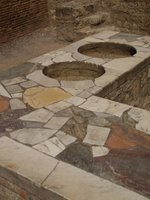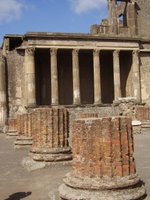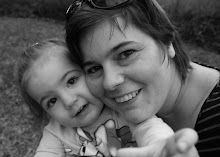This is an extract from my summer story. We visited Pompeii with Mum and Dad on 3rd August 2006


Leaving early we drove down Via Duomo, a wide well paved road lined with bridal shops, fashion boutiques and shops selling religious artefacts, garments and equipment. Turning left onto Via Nuova Marina, we followed the cobblestone road along the edge of the bay passing some of the uglier parts of the port with shipping containers, neglected buildings and seedy looking corners. Bumping along the road, crammed in between peak hour morning traffic, tour coaches and trams my parents held their breath, struggling with the Neapolitan style of driving. Gigi confidently zipped in and around the traffic and pedestrians, taking the freeway exit guiding us over the crush and commotion below. Driving on the freeways is another skill set, as loaded trucks tailgate, cars wander between lanes (mobile phone usage is responsible for a lot of distracted driving in this country), and expensive cars race by disregarding speed limits and general safety.
The morning was spent exploring the world’s most famous volcano disaster site, Pompeii. With 2.3 million visitors each year it’s Italy’s top tourist attraction, and with an average of 6500 tourists a day it can be as busy as the ancient streets must once have been.
In retrospect the locals should have suspected the volcano was restless when an earthquake struck in 62 A.D. Despite this preliminary warning and devastation Pompeii was quickly rebuilt and was a dynamic commercial centre, with market goods and people arriving from nearby villages when the volcanic eruption of 79 A.D. completely demolished Pompeii and the neighbouring towns of Herculaneum and Stabiae.
Pompeii lies a few miles south of Mount Vesuvius. The volcanic eruption buried the ancient city under layers of lapilli (burning fragments of pumice stone), volcanic sand and ash. It’s this combination of ashes mixed with rain that formed a hermetic seal around the city, preserving many private dwellings, public structures, shops, baths and temples. Surprisingly the city lay buried and undisturbed for some 1500 years and in 1748 excavations commenced. New discoveries were made in the 19th and 20th centuries, and a whole frescoed leisure area unearthed in 2000. It’s estimated that a quarter of the site is yet to be excavated.
Surprisingly, most of the city’s 20,000 inhabitants escaped the destruction carrying their personal belongings. However, some 2,000 people perished, either under rooves that collapsed as a result of the weigh of the burning stone, or from the poisonous gases released by the volcano.
One of Pompeii’s most enduring images is that of the body casts. The rain of ash and lapilli smothered those that didn’t manage to escape, including gladiators and slaves that were chained up; forming moulds that remained after the bodies themselves had decomposed. In 1870 the excavators filled these empty cavities with liquid plaster, thus preserving the exact forms of the bodies at the moment of death.
Many of these body casts are now housed in Naples at the National Archaeological Museum but there is a group of family members, struck by suffocation and fear, in an area of Pompeii now known as the Garden of the Fugitives. Entering the garden I was struck by how pretty the vineyards and imposing Mediterranean pines were in contrast to the surrounding dusty ruins. As Gigi scoured the fig trees for fruit Mum inspected the unripe bunches of grapes. However, the family of bodies, now stored in glass cabinets, is an eerie reminder of how terrifying the volcanic explosion must have been. Huddled together, the adults and children exude a level of panic we can’t possible imagine. The details of the facial expressions, exposed teeth, hands thrown over heads, curled up in foetal positions waiting for the end, are chilling and left me feeling disturbed.
The ancient Pompeii was enclosed by a wall with eight gates. We entered the site through the Porta Marina gate. Interestingly, this had been the south western sea gate providing convenient access to the town centre from the Bay of Naples. The eruption of 79 A.D. raised the sea beach and the course of the River Sarnus (now Sarno), placing the river and sea at a considerable distance from the ruined city.
Having arrived early we largely managed to avoid the tour bus groups that rush around the major points of interest over a short period of time. Walking along the pathway we passed the Temple of Venus, once one of the most lavish temples. It was still being repaired after the earthquake of 62 A.D. when the volcanic explosion buried it. Its exposed position meant the temple was severely pillaged, and it now sits in a terribly disappointing state.
As we strolled around the streets of Pompeii we admired the paving. Large flat stones, irregularly shaped, lined the roads edged on both sides by deep gutters and high footpaths. Remembering that the Pompeii we were exploring was an Italian provincial city of the 1st century A.D., imagine the work involved in sourcing, cutting, transporting and laying the stones to form amazingly solid, even roadways. Large square blocks are found at intervals along these roads, effectively connecting one footpath with another. These were used by citizens wishing to cross the road, especially when the streets were wet and muddy. I was particularly taken by the furrows carved into the paved roads by the wheels of carts. The tracks were most evident around the stepping blocks, and I found myself visualizing the horse and carts lumbering through the streets. Such images were further enhanced by the tethering rings still hanging from walls outside shops and homes where horses and pack animals were once tied up.
The only area closed to cart traffic was the Civic Forum. The foro, a large rectangular square, was a pedestrian precinct and the political, economic, commercial and religious centre of the city’s life. An impressive space, the pale Doric columns and arches offset the ruins of a row of shops and municipal buildings. But it’s the carved columns I love. Faded terracotta in colour, their surfaces pitted from 2,000 years of environmental deterioration, the craftsmanship is still evident in the carving that stands proud and austere to this day. Standing at a variety of heights, some of the columns once supported building structures and rooves; others were the bases for statues. The forum was awash with tourists, poking around, sitting on columns, capturing their memories on a range of photographic equipment, awing at the historical setting in a dozen languages.
Realising it would take days to fully explore the ancient city we decided to focus on only few main places of interest. A collection of structures located near the southern wall of the city near the Porta di Stabia gate. We walked through the Triangular Forum, enjoying the cooling shade of the pines and a striking row of Doric columns before pausing to chat with an English lady. My father and I were momentarily spellbound. With her blonde hair tied back, dressed in white linen, and dark sunglasses she was standing in the shade beside a wall of stone, a frilly white cotton sun umbrella attached to a baby carry backpack. The baby on her back was perfectly protected from the midday sun, snoozing with its thumb tucked in its mouth. A little girl, maybe 8 years old, was hovering nearby, her white shorts and pink shirt highlighting her lovely skin and pale hair like her mother’s. Dad asked if he could take her photo. Graciously agreeing, she was obviously surprised at the request. The picture of English poise, elegance and reserve she portrayed was distinctly different to the backdrop of fading, crumbling relics of a destroyed city in the summer heat.
Beside the Foro Triangolare is the city’s theatre district. A pathway led us up to the top tier of the Grand Theatre. Able to seat 5,000 spectators and originally built in 2nd century B.C. the theatre is a horse shoe shape, in the Greek style, that fits the natural contours of the sloping ground. A charming space, it must have been a delight to sit in the open arena of Teatro Grande on a spring evening watching a theatrical production of Roman times. The Small Theatre (also known as odeion from the Greek) is situated to the left and was constructed about 300 years later. Both theatres had tiered seating arrangements, with the first four tiers reserved for the Decurions. Often operating communally, the theatres staged music, drama, mime, dance and poetry recitals.
Taking in the strange beauty of the theatres we circled around the top tier behind the stage to view the Gladiators’ Barracks. A large open square ground, the barrack is surrounded by a portico of 74 columns and was originally used by spectators during breaks in theatrical productions, or as an extension of the stage. It was later used to accommodate gladiators, as indicated by the presence of cells, service areas, amour and weaponry.
The morning had become steadily warmer. Hats helped shield our faces from the steady beat of the sun, and water bottles were emptied as we then tramped through streets that were once busy with shops and trading. Carved symbols, frescos and fading notices in Latin script sign posted tailors, bakers, restaurants, inn, medicos, brothels and textile production. Most intriguing though were the kitchens and serving counters of the thermopolium, similar to our modern day cafes. Running my hands over the solid marble benches I wanted to know how they had made such flawlessly smooth collages from multi coloured marbles. Towards the end of the bench were two perfectly formed circular holes, used for cooking and serving hot food and drinks. Each bench we saw was an eclectic patchwork of marbles of pale grey, faded burgundy streaked with cream and ruby, a muted blue, saffron yellow shot with dark rose, chalky white with silver veins and a speckled charcoal hue. I wanted to box it up and ship it home for installation in my custom built home of the future.
The south eastern corner of the destroyed metropolis is a green, leafy area where we explored the Anfiteatro and the adjacent Grande Palestra. A long boulevard framed with Mediterranean Pines, their long lean trunks stretching skywards devoid of branches except at the very top where a multitude of branches and needle like leaves seem to burst out like a parasol, guides us towards two of Pompeii’s largest buildings. The Roman Amphitheatre had a seating capacity of 20,000 spectators. Wide arches took us from broad daylight into an ancient corridor, somehow simultaneously dank and dusty. Approaching the end of the tunnel, the glaring light beckoned us as though inviting us into the very heart of the sporting arena that once witnessed gory battles between gladiators and wild beasts. The local communities of Pompeii and Nuceria were such fiercely loyal supporters that in 59 A.D. a violent riot broke out between the fans. The Roman Senate then decided to close the amphitheatre for the next ten years.
The Grande Palestra is a large gymnasium and athletic field, surrounded by a wide columned verandah on three sides. A swimming pool in the centre, 35 metres in length and with a progressive depth, was filled by the public aqueduct. These facilities were built to house the young men’s association, and it was here that they exercised. Unfortunately it’s no longer possible to wander around inside the gymnasium, but even from the outside it was obviously a huge complex. I did however struggle to conjure up that distinct gym smell of fit, young men sweating from their work outs.
Poking our noses through a gate across the gym complex we watched workers tending to a historical vineyard. Oddly an old bath rested upside down by the wall and Dad asked Mum and I to sit on it for a photo. Why? He wanted a photo of us in Pompeii enjoying a Roman bath! Oh, to have the humour of a retiree.
Seeking a break from the crowds and an alternate route we followed Torre VII Road from the striking amphitheatre around the northern border of the site. Unexpectedly we found ourselves in parkland with picnic benches and shady trees providing a pleasant respite from the summer heat. Further along, we strode by small agricultural plots. Ripe cherry tomatoes, protected by shade cloths, hung temptingly from staked plants. Other vegetable crops and legumes were under irrigation. The strangest thing was the complete lack of excavated ruins. It was as though we had wandered off the map of Pompeii.
Next stop was the Villa of the Faun, one of the biggest, most luxurious houses in the highly urbanised city of Pompeii. It’s not known which family owned the house so it’s been named after the little bronze statue of a dancing mythical faun in a pool in the central atrium. The other main feature of the villa is the large polychrome mosaic depicting the famous battle at Issus when Alexander the Great of Macedon defeated Darius III of Persia in 333 BC. Based on a Hellenistic painting, it portrays the soldiers and horses, spears and swords, caught up in a violent, heaving, chaotic, desperate scene. Made up of 1.5 million pieces (brown, black, caramel, tan, grey, white, rusty red and mustard yellow), the original mosaic decorated the floor before being removed and relocated to the National Archaeological Museum in Naples. The original faun statue suffered the same fate. Sadly, the mosaic and statue on display in the Villa in Pompeii are replicas, although both replicas still attracted large crowds as the tour bus groups pushed, posed and pursued the requisite photo.
During the few hours we spent exploring Pompeii we came across two Necropolis, or city of the dead. These monumental tombs were decorated with frescoes depicting events from the life of the deceased or life size statues. The cemeteries of modern day Italy still reflect this cultural preference for burying the dead in imposing house like crypts, families group together, at a significant cost.
With sore feet and grumbling stomaches we wound our way through the eastern backstreets to the Villa dei Misteri. The Villa of the Mysteries is perhaps the best known, and certainly the most complete structure still standing after the earthquake, volcanic explosion, pillaging and World War II bombing. Originally built in the 2nd century B.C. it was renovated during the 1st century A.D. with some of the residential parts converted for agricultural production. The villa is a labyrinth of rustic rooms surrounded by gardens and farming land. In a back room we discovered a large wooden battering implement, carved from a tree trunk with the face of a ram on one end. The strange contraption was used as a wine press. The other highlight of the villa is the Dionysiac Frieze, the most important fresco still on site. Covering three walls of the large dining room it depicts the initiation of a young woman into the cult of Dionysus. The worship of Dionysus, the Greek god of wine, was accompanied by feasts, processions, and musical and dramatic performances and later became occasions for intoxication and gross debauchery. This magnificent fresco portrays a wide variety of frenetic celebrations with priestesses and hand maidens, floggings, drunkenness, phalluses, nudity and adornment, dancing, ecstasy and fear all occurring against the back drop of a red wall.
The ancient city of Pompeii is an extensive site and despite having most of the mosaics, murals, household items and artefacts sitting in museums in Naples and elsewhere around the world it certainly warrants its status as Italy’s most popular tourist attraction. It’s truly magical to wander around a city that thrived some 2,000 years ago and has been so incredibly preserved as a result of a horrifying natural disaster. With a little effort you can imagine the hustle and bustle, the roar of the crowd, the clip clop of horses on the stone roads, the aroma of baking bread, the cries of the vegetable seller and the proclamation of civic notices. As it comes alive you can picture the prostitutes, gladiators, senators, judges, servants and slaves, gardeners, surgeons, fruit and vegetable vendors, tax collectors, women and children going about their day, shopping, worshipping, farming, conducting business, legislating and enforcing the law. Just as we do, in our modern cities today.



1 comment:
Hi Jen - this story took me back to the moment in time when I was strolling through the streets of pompeii and marvelling at the relics and the actual fact that I was there soaking up the history. Enjoying your adventures but missing your face...
cheers from Kristina
Post a Comment